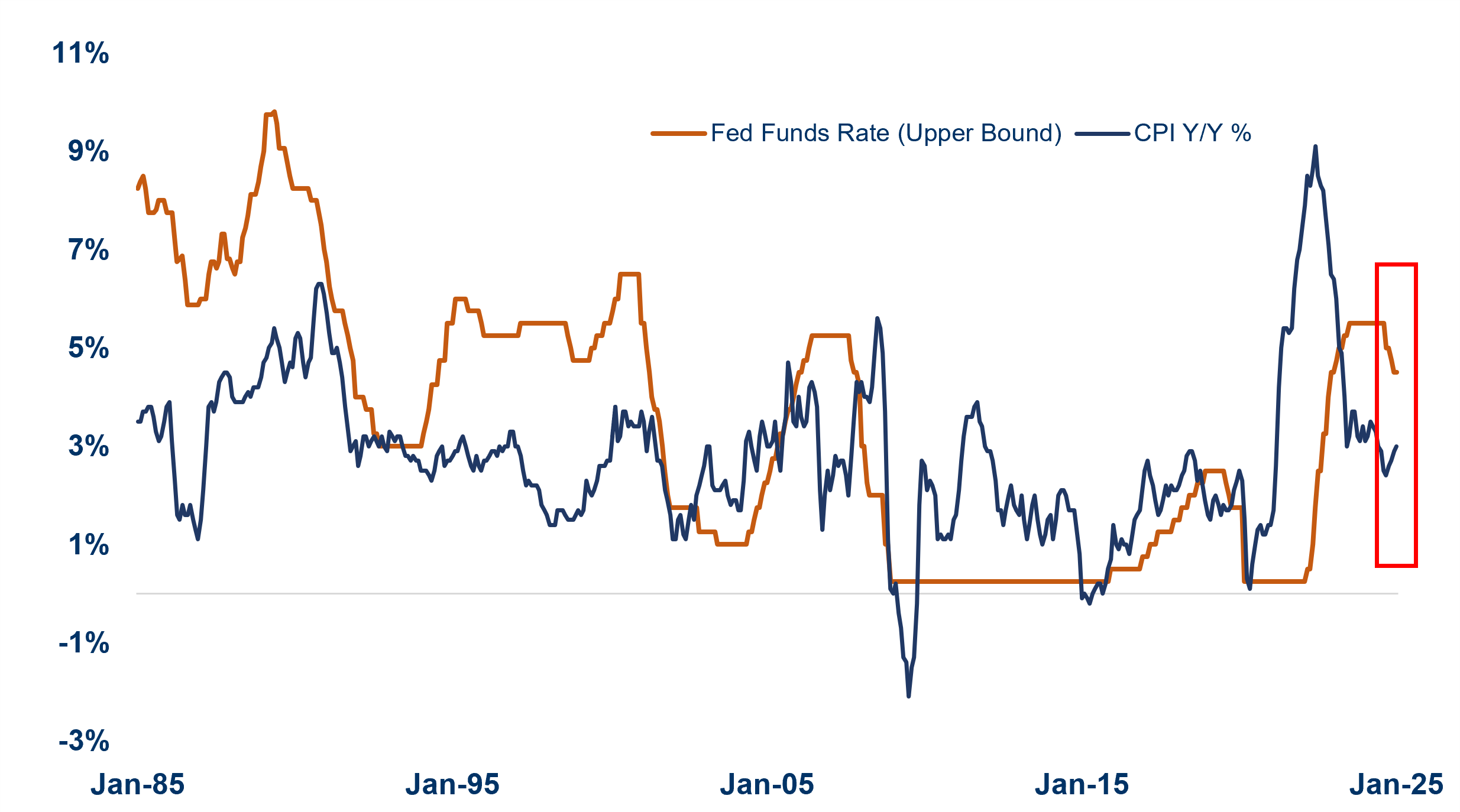Key Takeaways
- Annual inflation accelerated up to 3.0% in January from 2.9% in the previous reading.
- Shelter costs rose 0.4% in January, accounting for nearly a third of the headline increase.
- Energy prices rose 1.1% over the month from the rise in gas prices.
- Bird flu was a major factor in hotter food inflation, causing egg prices to rise 15.2%, the largest increase in roughly a decade and pushing annual prices up 53%.
- Large numbers of underinsured and uninsured drivers have impacted the auto insurance market. The motor vehicle insurance index rose 2.0% in January with little signs of easing.
- The demand for travel placed upside pressure on travel costs, including airfares, hotel prices, and rental vehicles. The number of travelers passing through TSA checkpoints in January was higher than January 2019 by about 200 million.
One-Off Event?
The avian flu outbreak significantly impacted egg prices due to its devastating effect on poultry flocks. Millions of egg-laying hens were culled to prevent the spread of the virus, drastically reducing the supply of eggs in recent months.
This reduction in supply, coupled with ongoing supply chain disruptions and increased production costs, has led to a historic increase in egg prices. Unfortunately, consumers were hit with higher prices in January, along with occasional shortages in grocery stores.
The impact on the country’s inflation metrics could be a one-off event as farmers deal with the shock. The spike in prices will not repeatedly occur if outbreaks are contained and supply disruptions improve.
Powell On the Hill
By law, the Federal Reserve (Fed) Chairman is required to give semi-annual testimony before both chambers of Congress, and this week’s testimony could be a catalyst for investors resetting rate expectations. Accompanying the oral testimony, the Fed publishes its Monetary Policy Report for Congress, and the latest edition has only two references to tariffs. We should expect Fed Chair Powell to refrain from too much speculation about trade policy given the constantly evolving stance.
Regarding tariffs — the hot topic of the moment — Powell will likely emphasize the nuanced impact from tariffs will depend on the sensitivities of firms and consumers, along with currency adjustments. Ultimately, tariffs increase the cost of doing business, but it’s not always clear-cut who bears the brunt.
Powell has emphasized the need for a cautious approach, indicating the Fed may need to keep interest rates higher for longer to combat inflation. Given the latest inflation release, the Fed will likely not cut rates until the summertime. At last year’s news conference, the Chair also mentioned the "Powell Paradox", where his dovish statements sometimes lead to market optimism, which can fuel inflationary pressures. Investors should remain focused on the long term, especially during this period of flux.
Fed Will Likely Wait Until Summer to Cut Rates
Fed Can Cut Further, Yet Remain Restrictive
Source: LPL Research, Federal Reserve, Bureau of Labor Statistics 02/12/25
Disclosures: Indexes are unmanaged and cannot be invested in directly.
As discussed in our Outlook 2025: Pragmatic Optimism, we expect stocks to move modestly higher in 2025, while acknowledging reasonable upside and downside scenarios.
We cannot rule out the possibility of short-term weakness as sentiment remains stretched and a lot of good news is priced into markets. Upside support could come from economic growth, a supportive Fed, strong corporate profits, and supportive policies from the Trump administration.
The most likely downside scenarios involve re-accelerating inflation, higher interest rates, and geopolitical threats that do economic harm. If inflation re-accelerates, equities may need to readjust to what could be a slower and shallower Fed rate-cutting cycle than markets are currently pricing in.
